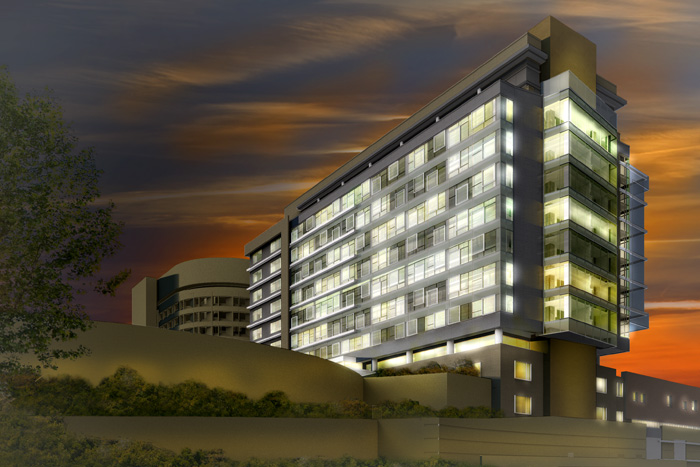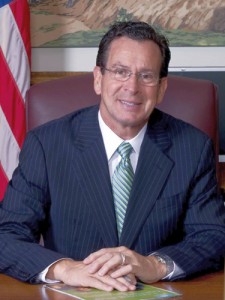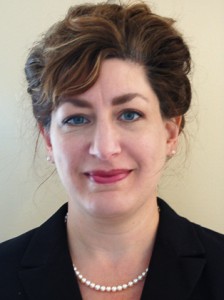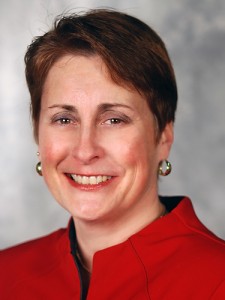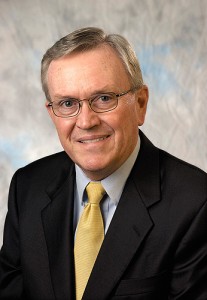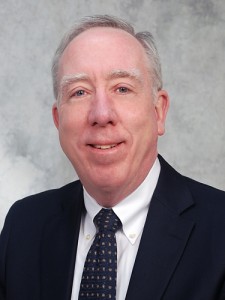
Gov. Dannel P. Malloy
“Bioscience Connecticut, the plan that laid the foundation for Jackson Laboratories to bring its genomic medicine operation to our state, has the strong potential to create thousands of well paying jobs in an industry that’s poised to grow. By some estimates, the personalized medicine industry generates nearly $300 billion dollars every year. Thanks to the work we’re doing at the UConn Health Center, Connecticut is well positioned to claim its share of this thriving business sector.”
UConn President Susan Herbst
“Bioscience Connecticut and the partnership with Jackson Labs are not only extraordinary new chapters in the life of this university, they represent new economic cornerstones in the life of this state. This initiative will help rejuvenate and expand Connecticut’s workforce and add new vitality to our state for decades to come. And it would not have happened without the visionary leadership provided by Governor Malloy and many others in state government, for which we are so grateful.”
Ellen Leone, associate vice president, clinical operations, and chief nursing officer
“Involving the clinical staff in the design of the new hospital clinical space has been especially rewarding. It has been such a value-added experience to have those with first-hand knowledge of patient and clinical care needs intimately involved in the design of new hospital clinical space. Clinical staff don’t often have the opportunity to participate in such an exciting endeavor. A once in a lifetime experience for many!”
Phil Austin, retired UConn President, also served as interim president and later as interim vice president for health affairs
“The Health Center has long been an institution that excels in educating our medical, dental and graduate students, but the commitment by the state, under the leadership and vision of Governor Malloy, will allow us to recruit an even higher level of faculty and students, and further enhance our education, research and patient care missions. All who care about UConn, specifically the Health Center, should be very happy and grateful and should look to the future with great optimism and hope.”
In less than a year, the UConn Health Center went from having an uncertain future to being on the verge of a series of major expansion projects designed to elevate the institution as well as the state’s economy and the future of health care.
“It’s a new day for the UConn Health Center, our region and beyond,” Dr. Frank M. Torti, the Health Center’s executive vice president for health affairs and dean of the UConn School of Medicine, said before the official groundbreaking for Bioscience Connecticut.
Here is a look back at the first year of the project.
May 2011
Four months after taking office, Gov. Dannel P. Malloy stands in the Health Center’s academic lobby and introduces his Bioscience Connecticut initiative, which he touts as a job creator that would transform Connecticut into a world leader in bioscience research.
“Prior to that, we were at a place where the future was uncertain,” says Tom Callahan, vice president and strategy officer for Bioscience Connecticut. “It’s a remarkable change in fortunes for the Health Center.”
June 2011
The Bioscience Connecticut bill wins final legislative approval.
“The legislation provided a clear pathway forward that wasn’t contingent on anything further than executing the plan,” Callahan says.
July, August 2011
With the Bioscience Connecticut bill now signed into law, it’s time to ramp up the planning and design work.
“We started over the course of the summer to pull together the construction team,” Callahan says. “We had to push forward on the hospital design for the new tower and get that completed. It’s through design development now and the construction drawing process is under way.”
Meantime, two other developments are taking shape over the summer.
- Plans to transfer licensure of the Neonatal Intensive Care Unit to Connecticut Children’s Medical Center are moving forward, with the idea of freeing up more of the UConn Health Center’s licensed beds as medical/surgical beds.
- The Malloy Administration and UConn Health Center officials are in talks with The Jackson Laboratory of Bar Harbor, Maine, “discussing the possibility of bringing Jackson to Connecticut,” Callahan says.
September 2011
The NICU integration is complete. This, combined with state Office of Health Care Access approval of 10 additional medical/surgical beds, enables the UConn Health Center to add 50 hospital beds, which will make it more financially viable.
Weeks later comes word from the Malloy Administration on Jackson: It’s a deal. Jackson would like to come to Connecticut to open a genomic medicine lab on the Health Center campus.
“It’s a very significant development for the state of Connecticut, and a very significant development for the Health Center. Jackson is an 80-plus-year-old- independent research organization that is globally recognized for the work it has done in genetics and system genomics in mice as a way of understanding causes and cures of human disease,” Callahan says. “They’re coming to Connecticut to build on that history and legacy.”
October 2011
The General Assembly approves the funding for the Jackson Laboratory project. Negotiations of the details of the final agreement between the state, Jackson, and the Health Center move forward.
The State Bond Commission releases $28 million to support Bioscience Connecticut’s community initiatives.
November, December 2011
The planning and designing continues in preparation for construction.
“What people generally see when they look at a construction project like this, or the series of construction projects, is the physical, actual construction that’s going on,” Callahan says. “But that’s literally one of the last steps in the process. The first step in the process is to say, ‘This is what we need institutionally for our future going forward.’ The people who are actually using those buildings must help inform the design.”
January 2012
At a ceremonial signing of the Jackson Laboratory bill in the academic lobby, Malloy announces finalization of the legal agreements between Jackson, the state and the Health Center.
The State Bond Commission grants final approval of the state financing to build the Jackson Laboratory for Genomic Medicine on the Health Center campus.
February-May 2012
A construction timeline takes shape.
The Health Center secures the permits and approvals necessary to start work on about 800,000 square feet of new space to be constructed over the next six years.
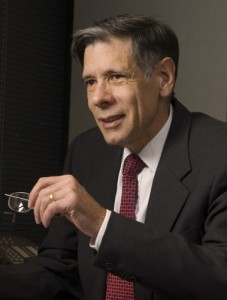
“It was one of the more comprehensive environmental impact evaluations that was completed in the state in some time,” Callahan says. “It was finished in less than six months. We have our initial permits from the Department of Energy and Environmental Protection that are required to start construction. Those pieces are running along parallel tracks as buildings are being designed, renovations are being designed, and it puts us in a position where at the end of this year we will start a series of construction projects.”
Torti assumes leadership of the UConn Health Center.
“Bioscience Connecticut creates the infrastructure and the economic engine that brings the jobs and technologies to Connecticut that will harness the creativity of the doctors, dentists and medical scientists—and their students we will recruit as part of Bioscience Connecticut—into new, practical treatments for our patients,” Torti says. “Every academic institution, every hospital and health center has a real chance to participate in this transformation.”
June 2012
The Health Center holds a groundbreaking ceremony to mark the start of the first Bioscience Connecticut construction project: a new parking garage in front of the main entrance.
“Between Ed Liu coming to Jackson as president and CEO, [UConn President] Susan Herbst coming, [Executive Vice President for Health Affairs] Frank Torti coming, encouraged by and working with Dan Malloy, a new governor who sees the Health Center as a critical platform for the state’s economic expansion and growth—the confluence of events over the course of the last 12 to 14 months that have allowed this to happen, it’s been really quite remarkable,” Callahan says.
Follow the UConn Health Center on Facebook, Twitter and YouTube.
